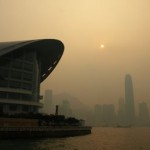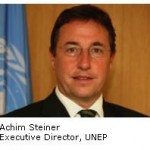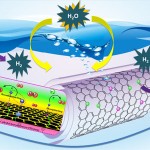
Geneva, Switzerland – The ozone holes high in the stratosphere over each of the Polar Regions have stopped growing due to the phase out of nearly 100 ozone-depleting substances once used in products like refrigerators and spray cans, United Nations scientists said today in a new report.
“Over the past decade, global ozone and ozone in the Arctic and Antarctic regions is no longer decreasing, but is not yet increasing,” the study finds.
The ozone layer protects earth and its inhabitants from the harmful ultra-violet rays of the sun. The ozone layer outside the Polar Regions will recover to pre-1980 levels before the middle of this century, but the annual spring-time ozone hole over the Antarctic is expected to take much longer, the study projects.
The phase out of ozone-destroying chemicals is required under the Montreal Protocol on Substances That Deplete the Ozone Layer, an international agreement written to protect the stratospheric ozone layer, which last year achieved universal ratification.
The report confirms that the Montreal Protocol is working. It was published on September 16, the annual International Day for the Preservation of the Ozone Layer, to mark protocol’s signature date in 1987. Written and reviewed by some 300 scientists, the report is a joint publication of the UN Environment Programme (UNEP) and the UN World Meteorological Organization (WMO).
“Atmospheric levels of ozone-depleting substances could have increased ten-fold by 2050, without the Montreal Protocol,” said UNEP Executive Director Achim Steiner. “This in turn could have led to up to 20 million more cases of skin cancer and 130 million more cases of eye cataracts, not to speak of damage to human immune systems, wildlife and agriculture,” Steiner said.
The Montreal Protocol has “provided substantial co-benefits by reducing climate change”, because many substances that deplete the ozone layer are also potent greenhouse gases, according to the report.

In 2010, the reduction of ozone depleting substances as a result of the Montreal Protocol were five times larger than those targeted by the first commitment period of the Kyoto Protocol, the greenhouse emissions reduction treaty, the report finds.
Changes in climate are expected to have an increasing influence on stratospheric ozone in the coming decades, the report says. “These changes derive principally from the emissions of long-lived greenhouse gases, mainly carbon dioxide, associated with human activities.”
An important remaining scientific challenge is to project future ozone abundance based on an understanding of the complex linkages between ozone and climate change.
UN Secretary-General Ban Ki-moon today called the Montreal Protocol “an excellent example” of setting a broad framework, clear targets and a gradual approach to implementation as governments gain confidence and build on initial steps, setting more ambitious goals. “When the Montreal Protocol was signed in 1987, governments did not originally envision the phase-out of any ozone-depleting substance,” said Ban. “Yet, as a result of strong national and global compliance, parties to the Montreal Protocol have cut production and consumption of these harmful chemicals by more than 98 percent.”
Michel Jarraud, Secretary-General of the World Meteorological Organization (WMO), said, “The ozone-hole issue demonstrates the importance of long-term atmospheric monitoring and research, without which ozone destruction would have continued unabated and might not have been detected until more serious damage was evident.”

The Antarctic ozone hole was discovered in 1985 by British scientists Joe Farman, Brian Gardiner, and Jonathan Shanklin of the British Antarctic Survey (BAS).
Shanklin said, “This discovery was a crucial reminder of the importance in investing in long-term monitoring, but perhaps the most startling lesson from the ozone hole is just how quickly our planet can change.”
In Antarctica today, high levels of ultraviolet radiation continue to be seen when the springtime ozone hole is large, the report finds.
There is a complex trade-off between banning ozone depleters and dealing with the harm caused by their replacements. Many ozone depleting chemicals, such as CFCs (chlorofluorocarbons), once present in products such as refrigerators and spray cans, have been phased out. But demand for replacement substances called HCFCs (hydrochlorofluorocarbons), and HFCs (hydrofluorocarbons), has increased. Many of these are powerful greenhouse gases.














